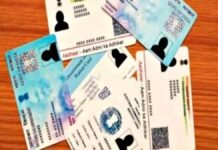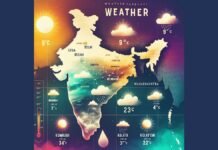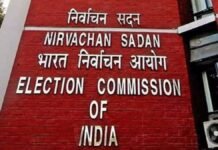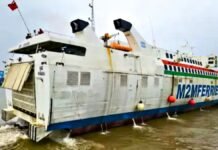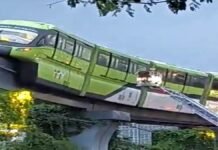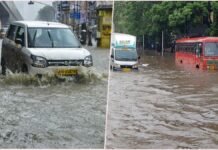
Key Points
- Monorail halted between Chembur–Bhakti Park amid heavy rain; passengers evacuated using cranes and rescue ladders.
- Power supply disruption cited as immediate trigger; probe ordered into technical cause and operational load.
- CM Devendra Fadnavis: Safety top priority; all agencies on-site, passengers to be evacuated safely.
- Local trains hit by rain-related disruptions; spillover crowd pressure reported on monorail services.
- Past precedents: Similar monorail stoppages in March 2015 and August 2019 due to power/technical faults.
Mumbai: Continuous heavy rain in Mumbai severely disrupted daily life, culminating in a dramatic incident where a monorail train became stranded mid-span near Mysore Colony on the Chembur–Bhakti Park stretch. With traction power interrupted, the rake came to a halt and passengers were trapped onboard. Rescue teams deployed cranes, elevated platforms, and ladders to bring people down safely. Emergency operations continued until all onboard were evacuated, with medical teams on standby for first-aid and dehydration checks.
Official Word and On-Ground Response
- Mumbai Monorail operations control reported a “minor power supply problem” affecting a train near Mysore Colony and dispatched operations and maintenance teams to the site.
- Maharashtra Deputy CM Devendra Fadnavis stated that all concerned agencies MMRDA, Fire Brigade, Police, and the civic body were mobilized immediately, emphasizing that passenger safety is the top priority. He assured that evacuations would be completed safely and ordered an investigation into the reasons behind the incident.
- The fire department set up a multi-pronged rescue, including securing the rake, stabilizing access points, and managing crowd control below the viaduct to ensure a safe perimeter.
Possible Cause: Overload Or Technical Fault?
While the immediate cause appears to be a traction power disruption, there was significant passenger rush attributed to rain-related interruptions on other transport modes. With local train services affected in parts of the city, overflow crowds reportedly shifted to the monorail corridor. Authorities have not confirmed overloading as the cause, but operational load and electrical protections will be examined during the technical audit. Key lines of inquiry:
- Traction power supply stability and substation health during inclement weather.
- Rolling stock protection systems and fault isolation.
- Crowd management, dispatch intervals, and load thresholds during service disruptions.
- Communication protocol and onboard emergency systems performance.
Impact on Commuters and City Services
- Extended delays on the monorail corridor, with advisories asking commuters to use alternate routes.
- Localized traffic bottlenecks near rescue access points and under-viaduct zones due to emergency vehicles and cordons.
- Rain-induced waterlogging in several pockets complicated logistics for cranes and rescue platforms, requiring additional stabilization and safety checks.
Safety Measures During Rescue
- Phased evacuation coach-by-coach using cranes/elevated platforms to minimize sway and ensure harnessed descent.
- Medical screening post-evacuation for vulnerable passengers; water and blankets arranged in staging areas.
- Real-time coordination between control room, rescue teams, and civic traffic police to maintain clear approach lanes.
Past Incidents: A Pattern To Address
- 15 March 2015: Monorail stranded due to power issues; passengers rescued using ladders/elevated platforms.
- 12 August 2019: Technical glitch led to a mid-line halt and emergency evacuation.
These incidents mirror today’s failure mode—power/technical vulnerability under stress—highlighting the need for resilient traction systems, weather shielding, and redundancy.
What Authorities Are Likely To Do Next
- Conduct a joint technical inquiry (MMRDA + OEM + independent electrical safety auditors).
- Review traction supply redundancy, surge protection, and isolation protocols during heavy rainfall and lightning.
- Stress-test rolling stock under peak-load scenarios and recalibrate load thresholds if required.
- Enhance emergency communication inside coaches (PA systems, SMS alerts, QR-based emergency info).
- Update SOPs for inter-agency rescue drills on elevated corridors during monsoon.



















